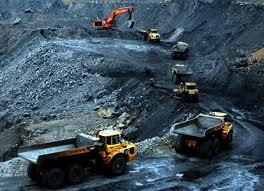Coal imports bring pointed questions
 Why does Vietnam import coal for generating power, while it has been exporting the product for years?
Why does Vietnam import coal for generating power, while it has been exporting the product for years?
When the government licences the building of new thermal power plants, particularly those positioned in the Mekong Delta the decision of using coal from northern coal mine Quang Ninh province or importing coal for power production is up to investors.
In fact, the transportation fare when coal is imported from Indonesia into the delta is tantamount to that when coal is transported from Quang Ninh into the delta region.
It is worth to mention that the quality of coal in Quang Ninh is very good with heat energy reaching 7,600-8,200 kcal/kg meanwhile coal used at thermo-power plants require heat energy of just 5,000-6,000 kcal/kg.
Hence, to boost economic efficiency, we have decided to import coal for power generation, while still exporting coal at higher prices to take advantages of price differences.
Would you shine further light on Vietnam’s coal export situation?
In 2007, Vietnam shipped 32.1 million tonnes of coal abroad, but the export volume kept falling since then. In 2009, just 19.4 million tonnes of coal were exported, slightly increasing to 19.8 million tonnes in 2010 before falling to 16.5 million tonnes in 2011. Coal export is relative to two following factors.
First, in recent years Vietnam mined around 44 million tonnes of coal annually while local consumption is around 19 million tonnes per year. The redundancy is then bound for export.
Second, since Vietnamese coal is of high quality, it enjoys higher prices than when it is sold domestically. Hence, exporting coal with better prices would help the coal sector balance expenses.
What about Vietnam’s current coal deposits?
According to the Ministry of Natural Resources and Environment, Vietnam is home to six coal basins, with Quang Ninh and the Red River basins being the largest ones. The Quang Ninh basin has a deposit of 3.46 billion tonnes when mining at 400 metre depth which could be running out within the next 60 years. Its total deposit is around 18.43 billion tonnes at 1,500m depth. The heat energy for coal there is 7,800-8,600 kcal/kg.
The Red River basin reports a coal deposit of 36.9 billion tonnes at 1,700m depth underground. The heat energy ranges from 5,300 to 7,300 kcal/kg. State miner Vinacomin figures showed that total forecast capacity of Red River basin’s continental shelf is around 202.3 billion tonnes. This means Vietnam enjoys huge untapped coal potential.
The Ministry of Finance has decided to hike coal products’ export duty to 20 per cent from 15 per cent to reduce export volumes. Why it was?
Any movement in Vietnam’s export and import, including that of coal, must abide by World Trade Organization (WTO) undertakings. Accordingly, we could not intervene using administrative measures but we need to use the tax vehicle.
We have over-mined coal in some past years compared to what we need. In the next years more coal will be required to service growing development needs (about 8-10 million tonnes more in 2012, surging to 28 million tonnes by 2015), meanwhile mining activities could not keep pace with rising demands. Restricting coal import through raising coal export duty comes on par with WTO requirements.
What the stars mean:
★ Poor ★ ★ Promising ★★★ Good ★★★★ Very good ★★★★★ Exceptional
 Tag:
Tag:
Related Contents
Latest News
More News
- Mitsubishi Estate launches Logicross Hai Phong - a milestone in logistics evolution (November 20, 2024 | 14:32)
- Semiconductor workforce partnerships deliver industry-relevant training (November 20, 2024 | 10:58)
- German Quickpack to invest $31.7 million in Long An province (November 20, 2024 | 09:31)
- Foreign-invested enterprises drive logistics investment in the southeast region (November 20, 2024 | 09:27)
- Chile visit underscores trade benefits (November 19, 2024 | 10:00)
- Trump’s second term impacts sci-tech activities and industry 4.0 technologies (November 18, 2024 | 10:00)
- Vietnam eyes nuclear revival to bolster energy security (November 14, 2024 | 16:46)
- Kyokuyo completes $13.5 million seafood factory in Vietnam (November 14, 2024 | 12:19)
- VinFast receives $3.5 billion funding from Vingroup and Pham Nhat Vuong (November 14, 2024 | 06:38)
- Localities sprint to reach FDI targets (November 13, 2024 | 10:00)





















 Mobile Version
Mobile Version